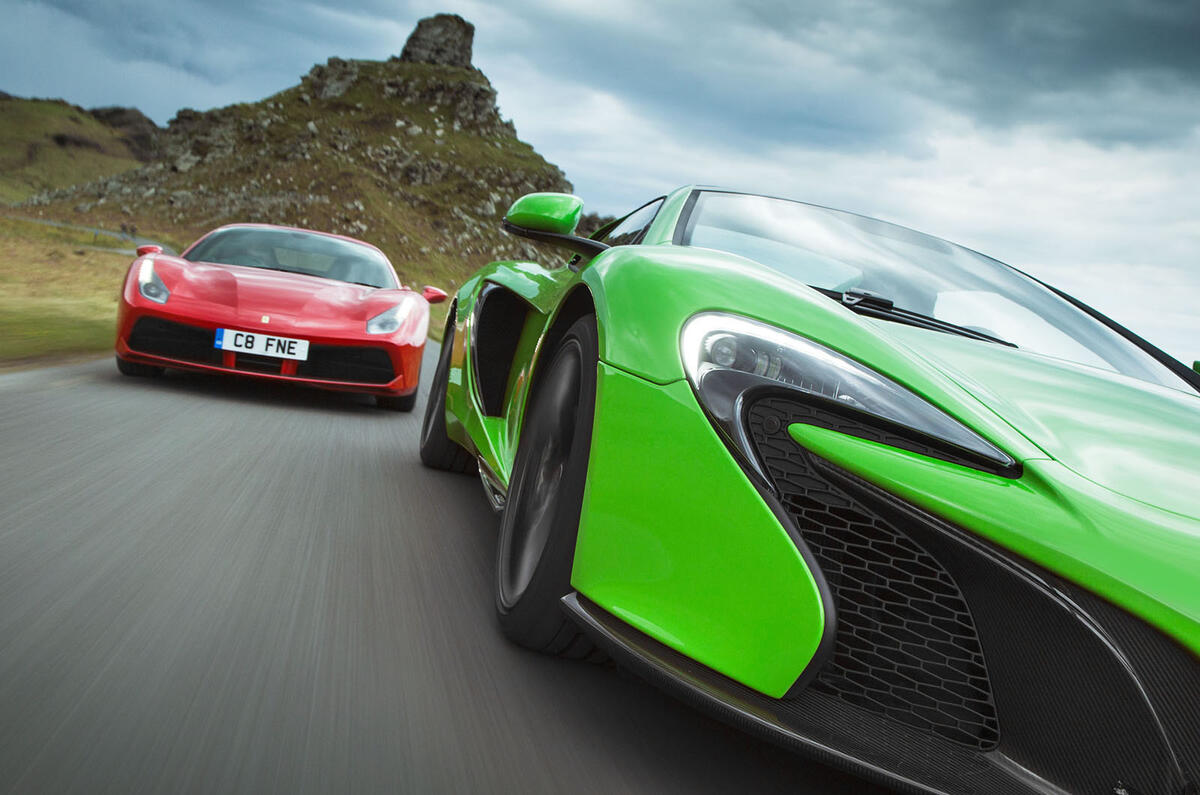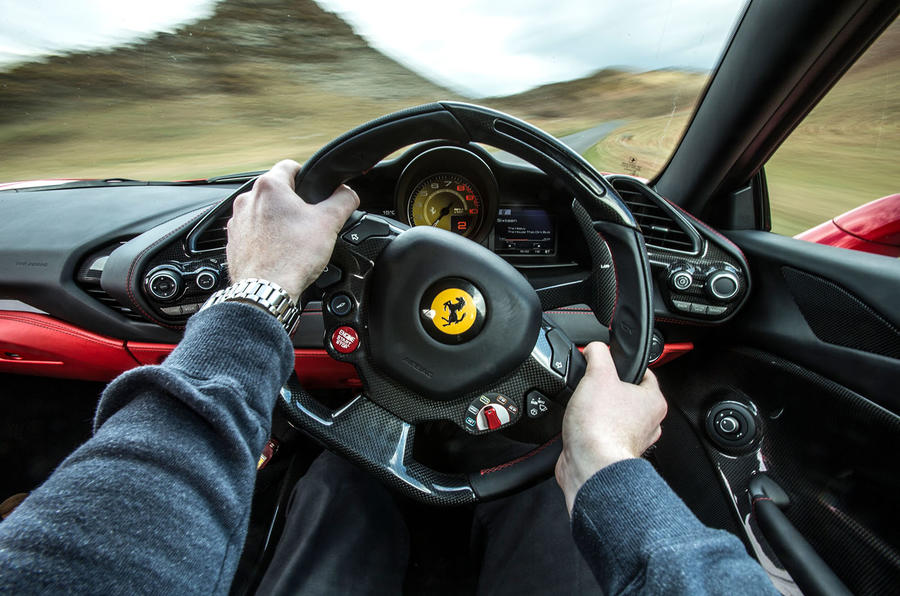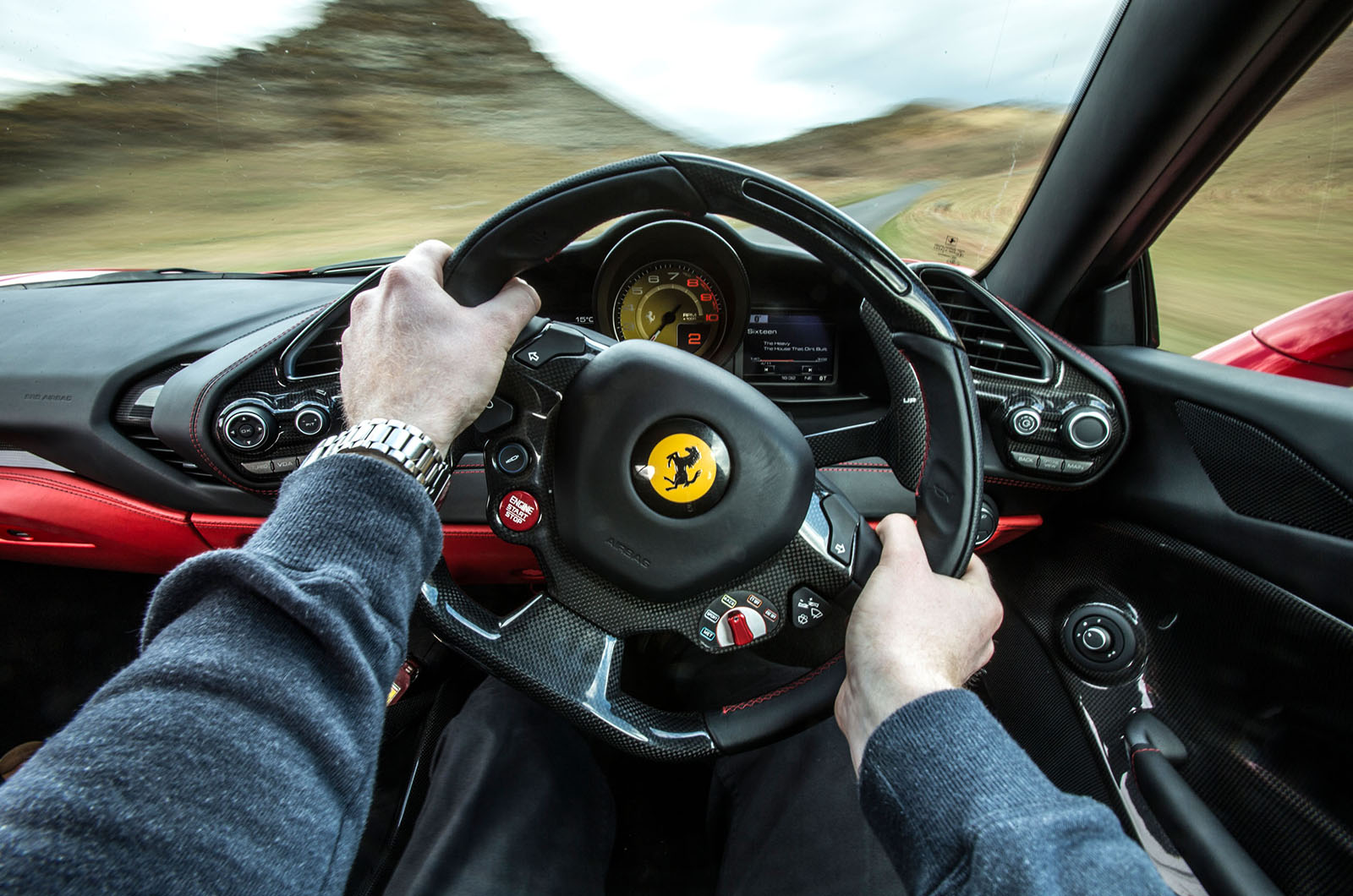How’s this for a foregone conclusion? Ferrari’s 488 GTB won our Britain’s Best Driver’s Car contest last autumn. There was no McLaren at that event, but the 650S didn’t win it when it did make an appearance in 2014.
And supercar group tests aren’t meant to be like top-flight sporting competitions; a car that wins once should only ever win again. Cars don’t have good and bad days or give the impossible 110% that sports stars insist they need to find in order to beat a good team on a good day. Assessments of cars are objective and final; the 488 came, saw, conquered and left. Game over. The end.
Supposedly, at least. But? But a few things. One, we haven’t had this match-up, and the Ferrari-McLaren contest on the road is proving to be as intriguing – and full of needle – as it has always been on the race track. Two, the road thing is important, because every previous assessment of the 488 GTB has featured a track element. But not this time, and that might make a difference. The 488 is joyous on a circuit, we’ve found, because you can throw it around like it’s a Toyota GT86. It’s so adjustable and agile, and my word is it fast.
But, at the risk of getting ahead of myself, it’s on the road – the A39, to be precise – where I’m starting to doubt what I know. The 650S is wowing me with its steering and impeccable body control, and I wonder if what I know about these cars is right. Get the two in the right territory – the kind of territory where most driving is done, away from the world of big drifts, smooth surfaces, smoking tyres and places where you can enjoy full throttle for 20 seconds at a time – and I’m beginning to think things, perhaps, are different. That the 650S is the right car, in the right place, at the right time.
But, yes, I’ll come back to it. First, details. As supercars go, the 650S and 488 GTB are closer than most. Supercar group tests are usually easy to define: there’s the rear-engined one over there, the front-engined one here and another mid-engined one here, but that’s okay because it’s four-wheel drive and has a V10. It’s all so much easier than city car group tests, where differences are defined by pennies and millimetres. But, no, with Ferrari and McLaren, McLaren and Ferrari, the differences are far smaller. It’s in attitudes and approaches to details where they depart, rather than in general principles – as you should probably expect from two companies whose interests are so heavily involved in racing and each other.





























Join the debate
Add your comment
488
Also, what an excellent article, so well written and simple to understand unlike Nic Cacket's stuff.
Well written article which
These are too much hussle and worries...